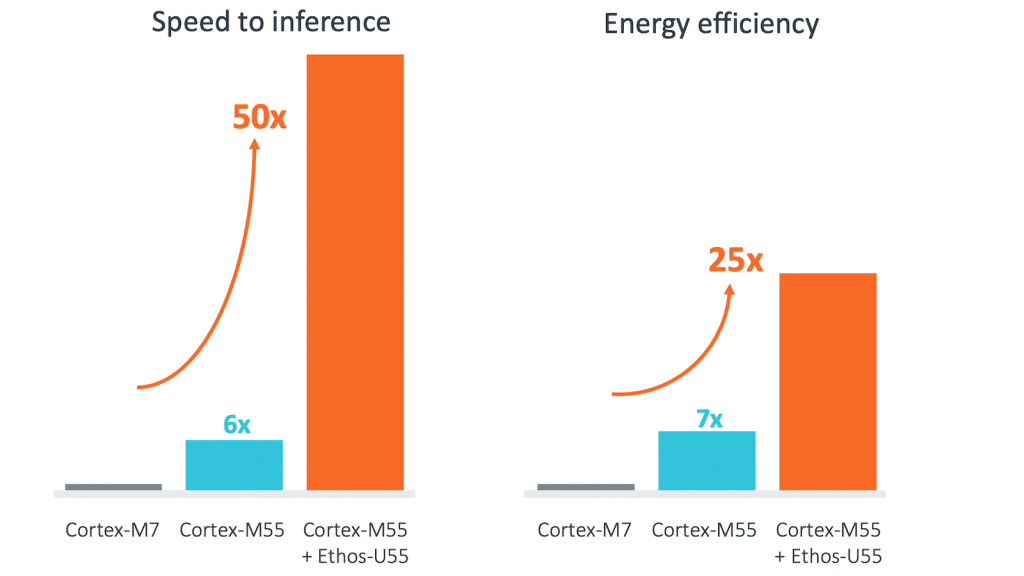Using Arm Helium Vector Processing to Bring Machine Learning to Endpoint Applications

Endpoint devices are becoming increasingly intelligent, with many new devices capable of running complex machine learning models and other AI applications. However, adding intelligence to endpoint devices can be challenging, especially when considering cost and power constraints.
Arm Helium Vector Processing Reduces Costs and Preserves Power
Let’s explore how Arm Helium Vector Processing on Ensemble microcontrollers can bridge the gap for battery friendly AI applications. Arm Helium is a new vector processing architecture designed for embedded and mobile devices. It offers several advantages over traditional scalar processors, including:
- Improved performance: Arm Helium can deliver significant performance improvements for AI and machine learning applications because of its dual-beat (2*32 = 64-bit) architecture.
- Reduced power consumption: Arm Helium is designed to be very power-efficient, making it ideal for battery-powered devices.
- Smaller footprint: Arm Helium is a compact architecture that can be easily integrated into existing system designs.
- Improved security: Arm Helium can enhance security by processing data locally (on the edge) by reducing the need to send data back and forth to the cloud thus avoiding privacy concerns and connectivity issues that could reduce reliability.
In addition to these performance and power benefits, Arm Helium is also easy to use. Arm provides a complete set of tools and libraries that can be used to efficiently target Helium. This makes it easy for developers to start using Helium to add intelligence to their endpoint devices.
Demonstration on Alif Ensemble E7 Shows a 5x Reduction in Power Consumption
Arm dives into the issue of cost and power efficient AI in their webinar Bringing Intelligence to Constrained Endpoint Devices, with a demonstration on the Alif Ensemble E7 fusion processor, which is an Arm-based microcontroller with Ethos-U55 and Cortex-M55 on board. The result is a significant increase in compute performance and a 3-5X reduction in energy usage, especially when compared to the Cortex-M4 and Cortex-M33.
In a live demo of a real-world example on the Alif Ensemble Development Kit running an 8-bit 16×16 matrix multiplication, just by enabling Helium vector acceleration on the Cortex-M55 inside the Ensemble E3, Arm was able to highlight up to an 82% improvement in execution time with the help of CMSIS-DSP native library functions and compiler optimizations.

Conclusion
The potential applications that can benefit from power efficient artificial intelligence are numerous:
- Smart home devices: Alif Ensemble MCUs and fusion processors are being used to power a new generation of smart home devices that can perform tasks such as facial recognition, object detection, and natural language processing.
- Wearable devices: Alif Ensemble MCUs and fusion processors are being used to power wearable devices that can track fitness, monitor health, and provide personalized recommendations.
- Industrial devices: Alif Ensemble MCUs and fusion processors are being used to power industrial devices that can perform predictive maintenance, quality control, and other complex tasks.
You can get started developing with Arm Cortex-M55 and Ethos-U55 today with an Alif Semiconductor evaluation kit.

